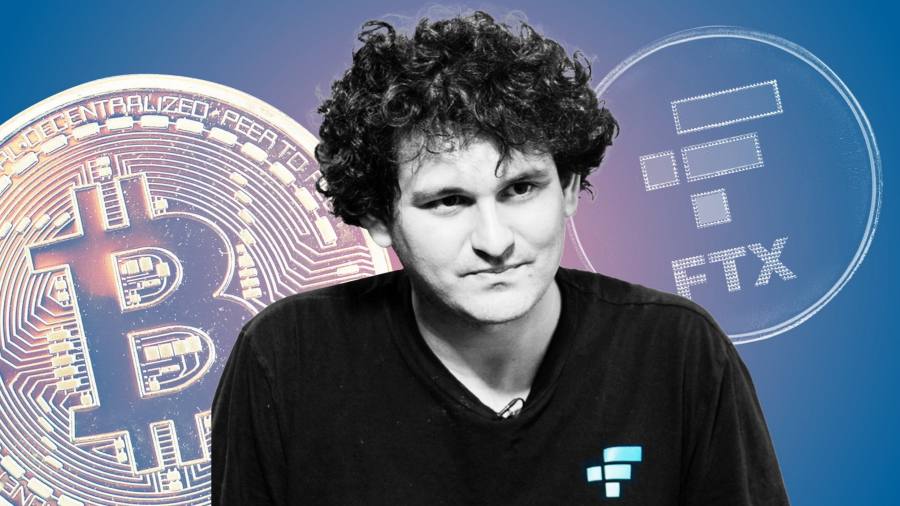
The trajectory from hero to zero can be swift and brutal, as Sam Bankman-Fried can attest. The 30-year-old boss of FTX, who last year aspired to buy Goldman Sachs, this week saw his on-paper $24bn fortune crumble, as his crypto exchange suffered an $8bn liquidity crunch. SBF marketed himself as the friendly face of crypto, who was — at least ostensibly — engaging with regulators, and attracting celebrities and blue-chip investors. His empire’s downfall leaves a dog-eat-dog cryptosphere that ordinary investors, regulators and politicians should treat with caution.
SBF’s woes began on November 2, when CoinDesk revealed that his hedge fund, Alameda Research, was full of the tokens FTX prints out of thin air, FTT. Of Alameda’s $14.6bn in assets, nearly $6bn was FTT, with $2.2bn of it pledged as collateral against loans. Four days later, FTX’s arch-rival, Binance, said it would sell its $580mn of FTT in light of the revelations. This spooked customers, who withdrew as much as $6bn from FTX in three days, eroding FTT’s value from $22 to $5. FTX appealed to Binance to rescue it on Tuesday. In a surprise to precisely no one, Binance killed the deal less than two days later, citing inquiries by US securities and futures watchdogs into FTX, and allegedly mishandled customer funds. FTX limps on to find other white knights.
Its travails leave many questions, not least how an exchange, valued in January at $32bn, could suffer a liquidity crisis if correctly managed. One view is that if a project is based on little more than the greater-fool theory, quite aside from what seems like circular accounting, sooner or later the facade will come crashing down. In April, SBF likened “yield farming” — a complex crypto lending practice FTX offered — to a box whose value is determined by others’ willingness to contribute more dollars to it, prompting his Bloomberg interviewer to suggest that this sounded much like a Ponzi scheme.
Critically, FTX customers are now frozen out of their accounts. Equity investors, some of whom should have clearly known better — including the Ontario Teachers’ Pension Plan, SoftBank and BlackRock — are expressly not SBF’s top priority. It is, shockingly, the second time this year, after Celsius Network’s bankruptcy, that a Canadian pension fund has been burnt following a bad crypto bet. Pension funds have no business investing customers’ retirement savings in a market as volatile as crypto.
The saga leaves Binance’s Changpeng “CZ” Zhao as top dog, with the world’s biggest crypto exchange. CZ alleged as he sold FTT: “We won’t support people who lobby against other industry players behind their backs.” SBF later addressed a “particular sparring partner” on Twitter: “Well played, you won.”
Binance’s position should worry watchdogs and lawmakers, given both its sheer size, with more than 28mn users, and its pugnacious attitude to regulations. It has designed itself to be based everywhere, yet nowhere. The US justice department is investigating it over money-laundering controls; Reuters reported this week that Binance processed $8bn of transactions for Iranian entities since 2018.
Despite exchanges’ importance as a bridge between crypto and fiat currencies, and despite other crypto implosions this year, effective regulation is still not in place. This needs to change, urgently.
CZ has mused, accurately, that FTX holds key lessons, including never using a token you create as collateral. He is also correct to forecast that Binance’s dominance will attract more regulatory scrutiny. It is necessary but will only happen if watchdogs are empowered to police an area of finance that is currently wreaking unnecessary havoc.